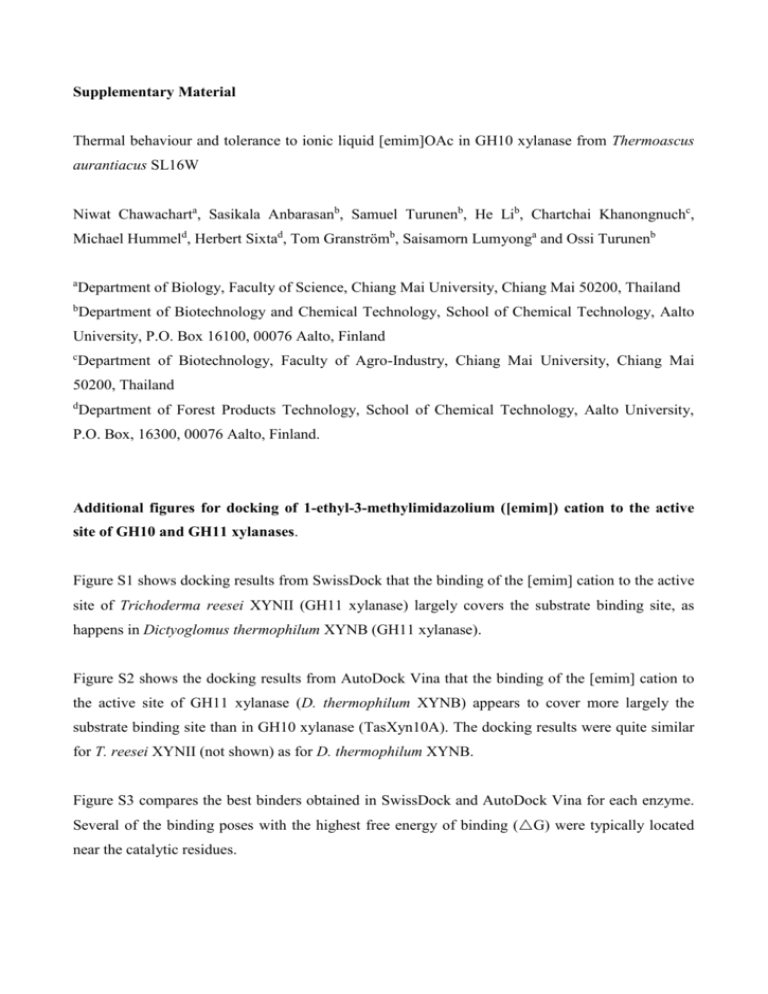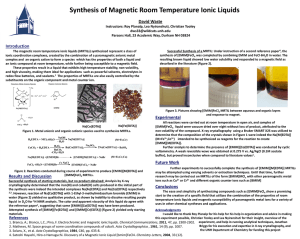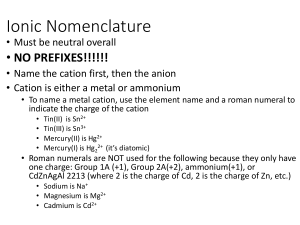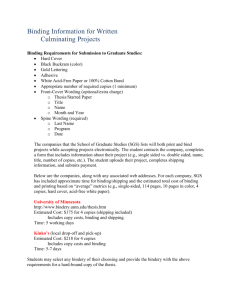Supplementary Material Thermal behaviour and tolerance to ionic
advertisement

Supplementary Material Thermal behaviour and tolerance to ionic liquid [emim]OAc in GH10 xylanase from Thermoascus aurantiacus SL16W Niwat Chawacharta, Sasikala Anbarasanb, Samuel Turunenb, He Lib, Chartchai Khanongnuchc, Michael Hummeld, Herbert Sixtad, Tom Granströmb, Saisamorn Lumyonga and Ossi Turunenb a Department of Biology, Faculty of Science, Chiang Mai University, Chiang Mai 50200, Thailand b Department of Biotechnology and Chemical Technology, School of Chemical Technology, Aalto University, P.O. Box 16100, 00076 Aalto, Finland c Department of Biotechnology, Faculty of Agro-Industry, Chiang Mai University, Chiang Mai 50200, Thailand d Department of Forest Products Technology, School of Chemical Technology, Aalto University, P.O. Box, 16300, 00076 Aalto, Finland. Additional figures for docking of 1-ethyl-3-methylimidazolium ([emim]) cation to the active site of GH10 and GH11 xylanases. Figure S1 shows docking results from SwissDock that the binding of the [emim] cation to the active site of Trichoderma reesei XYNII (GH11 xylanase) largely covers the substrate binding site, as happens in Dictyoglomus thermophilum XYNB (GH11 xylanase). Figure S2 shows the docking results from AutoDock Vina that the binding of the [emim] cation to the active site of GH11 xylanase (D. thermophilum XYNB) appears to cover more largely the substrate binding site than in GH10 xylanase (TasXyn10A). The docking results were quite similar for T. reesei XYNII (not shown) as for D. thermophilum XYNB. Figure S3 compares the best binders obtained in SwissDock and AutoDock Vina for each enzyme. Several of the binding poses with the highest free energy of binding (G) were typically located near the catalytic residues. Fig. S1. Docking of the [emim] cation to the active site of T. reesei XYNII in SwissDock. The first binding positions of the [emim] cation in each of the 33 clusters bound to T. reesei XYNII are shown. The [emim] cation is coloured in cyan and blue (nitrogen atom in blue). Catalytic glutamic acids are shown: N shows nucleophile and A/B shows acid/base. UCSF Chimera created the figure. Fig. S1A Fig. S2. Binding to the active site among 20 poses detected in AutoDock Vina. Shown are bindings for A) TasXyn10A and B) D. thermophilum XYNB. Catalytic acid/base (A/B) and nucleophile (N) are shown. AutoDock Tools created these figures. Fig. S2A Fig. S2B Fig. S3. Highest energy (G) binders of the [emim] cation in docking to the active sites in SwissDock and AutoDock Vina. The [emim] cation binding in SwissDock is shown in yellow and in AutoDock Vina, it is shown in pink (nitrogen in blue); when two [emim] molecules are shown from one method, both have the same binding energy. The negative charge of nucleophile and the positive charge of [emim] cation are shown, as well as the positive charge of nearby Arg or Lys, which possibly causes repulsion to the [emim] cation. A) T. aurantiacus XYN10A (1TUX): E237, nucleophile, and E131, acid/base; G of binding: -7.8 kcal/mol in SwissDock and -3.4 kcal/mol in AutoDock Vina. B) D. thermophilum XYNB (1F5J); E90, nucleophile and E180, acid/base; G of binding: -7.0 kcal/mol in SwissDock and -4.5 kcal/mol in AutoDock Vina. C) T. reesei XYNII (1XYP); E86, nucleophile and E177, acid/base; G of binding: -7.0 kcal/mol in SwissDock and -3.4 kcal/mol in AutoDock Vina. From the SwissDock results: In D. thermophilum XYNB, the distance from the positively charged nitrogen of the [emim] cation to the carboxylic acid group of Glu90 is 3.55Å, in T. reesei XYNII, it is 4.35Å and in TasXyn10A, it is 3.28Å. PyMol created the figures. Fig. S3A Fig. S3B Fig. S3C






